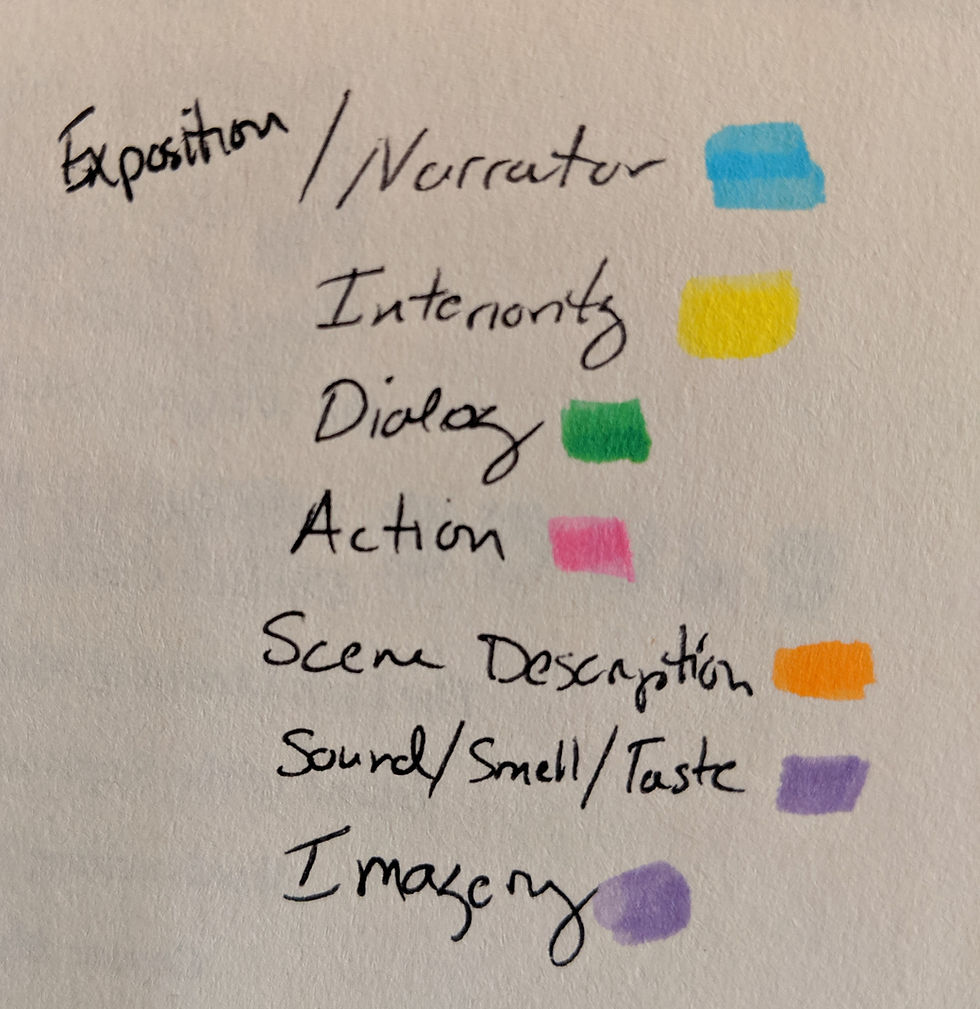How to save your writing with a pack of highlighters
- Final Boss
- Sep 27, 2019
- 3 min read
Working as an editor, I’ve read a LOT of amateur fiction and given lots of advice to aspiring writers. Over time, patterns start to emerge, and one of the most common issues sounds like the most obvious question in the world. What the heck are you supposed to write? You’re answer probably is, “Um, your story, Jeff.” Okay, but how do you do write that story? Should you start with an action scene or worldbuildling? Are you spending too much time writing dialogue and too little describing the room the characters are actually talking in? When everyone tells you to show and not tell, is it acceptable to take a break from the action to tell a character’s thoughts? And if so, how long should the break be? Here’s the simplest way to phrase the question: In telling your story, what types of prose should you use to most effectively communicate your vision to reader? Today, I hope to help you answer that question for yourself. You’ll need a bunch of highlighters, some books you really like (that are in your genre), and a positive attitude. Trust me, this will make sense in a second.

The best way to learn is to imitate, and the best way to learn how to balance various types of prose is to go to one of your favorite books and see how other authors are doing it. Here’s what you’re going to do: STEP 1: Pick a book from the genre you’re writing in that you like. (short stories are okay too) STEP 2: Get different color highlighters for the different parts of speech you’re going to “track” in this book. Here’s a simple list of the ones I use, but feel free to add and adapt (this isn’t comprehensive):
BLUE = Narrator’s voice / Exposition
YELLOW = Interiority / Free indirect discourse
GREEN = Dialog
PINK = Action
ORANGE = Scene Description
(optional) PURPLE = Sensory details (sound / smell / taste)
(optional) RED = Imagery and metaphor
STEP 3: Read and highlight carefully. Try to be as accurate as possible, and keep the colors as clean as you can manage. STEP 4: Hold the book away from you and look at the pages.
Are there types of prose that are being more used than others?
Are there certain sections that have a dominant type?
What types are most present in character driven stories vs. plot driven stories?
STEP 5: Highlight a page of your own work. Does it look similar? Different?

This is a piece of advice I give to tons of writers, and I hope it helps you in your revisions. To give you a head start, I wanted to share three tips I’ve picked up doing this process for myself:
Spend most of your time in “ACTION” and “DIALOGUE” if you’re writing modern fiction,
Use external stimulus in the world to trigger thoughts. A friend walking down the street might cue a musing on the protagonist’s opinion of them. But keep the musing SHORT!
Treat scene description like camera shots. In most cases, start with an establishing shot, showing us where we are and zoom into the details. (See if you can find times when Authors broken this convention and comment on why you think they subverted it),

Now it’s your turn. Post what you learned in the comments!






















Comments